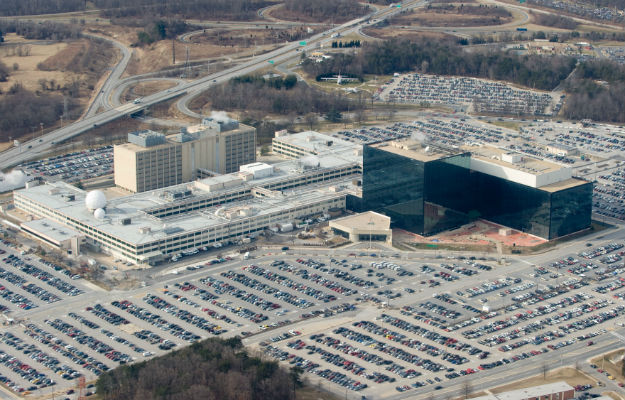
From Matthew M. Aid, Foreign Policy: According to a number of confidential sources, a highly secretive unit of the National Security Agency (NSA), the U.S. government’s huge electronic eavesdropping organization, called the Office of Tailored Access Operations, or TAO, has successfully penetrated Chinese computer and telecommunications systems for almost 15 years , generating some of the best and most reliable intelligence information about what is going on inside the People’s Republic of China.
Hidden away inside the massive NSA headquarters complex at Fort Meade, Maryland, in a large suite of offices segregated from the rest of the agency, TAO is a mystery to many NSA employees. Relatively few NSA officials have complete access to information about TAO because of the extraordinary sensitivity of its operations, and it requires a special security clearance to gain access to the unit’s work spaces inside the NSA operations complex. The door leading to its ultramodern operations center is protected by armed guards, an imposing steel door that can only be entered by entering the correct six-digit code into a keypad, and a retinal scanner to ensure that only those individuals specially cleared for access get through the door.
According to former NSA officials interviewed for this article, TAO’s mission is simple. It collects intelligence information on foreign targets by surreptitiously hacking into their computers and telecommunications systems, cracking passwords, compromising the computer security systems protecting the targeted computer, stealing the data stored on computer hard drives, and then copying all the messages and data traffic passing within the targeted email and text-messaging systems. The technical term of art used by NSA to describe these operations is computer network exploitation (CNE).
TAO is also responsible for developing the information that would allow the United States to destroy or damage foreign computer and telecommunications systems with a cyberattack if so directed by the president. The organization responsible for conducting such a cyberattack is U.S. Cyber Command (Cybercom), whose headquarters is located at Fort Meade and whose chief is the director of the NSA, Gen. Keith Alexander.
Commanded since April of this year by Robert Joyce, who formerly was the deputy director of the NSA’s Information Assurance Directorate (responsible for protecting the U.S. government’s communications and computer systems), TAO, sources say, is now the largest and arguably the most important component of the NSA’s huge Signal Intelligence (SIGINT) Directorate, consisting of over 1,000 military and civilian computer hackers, intelligence analysts, targeting specialists, computer hardware and software designers, and electrical engineers. . . .
TAO’s work would not be possible without the team of gifted computer scientists and software engineers belonging to the Data Network Technologies Branch, who develop the sophisticated computer software that allows the unit’s operators to perform their intelligence collection mission. A separate unit within TAO called the Telecommunications Network Technologies Branch (TNT) develops the techniques that allow TAO’s hackers to covertly gain access to targeted computer systems and telecommunications networks without being detected. Meanwhile, TAO’s Mission Infrastructure Technologies Branch develops and builds the sensitive computer and telecommunications monitoring hardware and support infrastructure that keeps the effort up and running.
TAO even has its own small clandestine intelligence-gathering unit called the Access Technologies Operations Branch, which includes personnel seconded by the CIA and the FBI, who perform what are described as "off-net operations," which is a polite way of saying that they arrange for CIA agents to surreptitiously plant eavesdropping devices on computers and/or telecommunications systems overseas so that TAO’s hackers can remotely access them from Fort Meade. . . .
Since its creation in 1997, TAO has garnered a reputation for producing some of the best intelligence available to the U.S. intelligence community not only about China, but also on foreign terrorist groups, espionage activities being conducted against the United States by foreign governments, ballistic missile and weapons of mass destruction developments around the globe, and the latest political, military, and economic developments around the globe.
According to a former NSA official, by 2007 TAO’s 600 intercept operators were secretly tapping into thousands of foreign computer systems and accessing password-protected computer hard drives and emails of targets around the world. As detailed in my 2009 history of NSA, The Secret Sentry, this highly classified intercept program, known at the time as Stumpcursor, proved to be critically important during the U.S. Army’s 2007 "surge" in Iraq, where it was credited with single-handedly identifying and locating over 100 Iraqi and al Qaeda insurgent cells in and around Baghdad. That same year, sources report that TAO was given an award for producing particularly important intelligence information about whether Iran was trying to build an atomic bomb. . . .
There’s no question that TAO has continued to grow in size and importance since Obama took office in 2009, which is indicative of its outsized role. In recent years, TAO’s collection operations have expanded from Fort Meade to some of the agency’s most important listening posts in the United States. There are now mini-TAO units operating at the huge NSA SIGINT intercept and processing centers at NSA Hawaii at Wahiawa on the island of Oahu; NSA Georgia at Fort Gordon, Georgia; and NSA Texas at the Medina Annex outside San Antonio, Texas; and within the huge NSA listening post at Buckley Air Force Base outside Denver.
Matthew M. Aid is the author of Intel Wars: The Secret History of the Fight Against Terror and The Secret Sentry: The Untold History of the National Security Agency, and is co-editor with Cees Wiebes of Secrets of Signals Intelligence During the Cold War and Beyond. (photo: Thomas Samson/AFP/Getty)
Image: getty%206%2011%2013%20NSA.jpg
